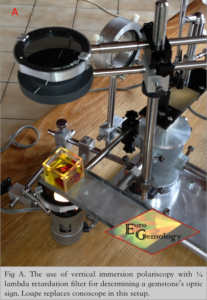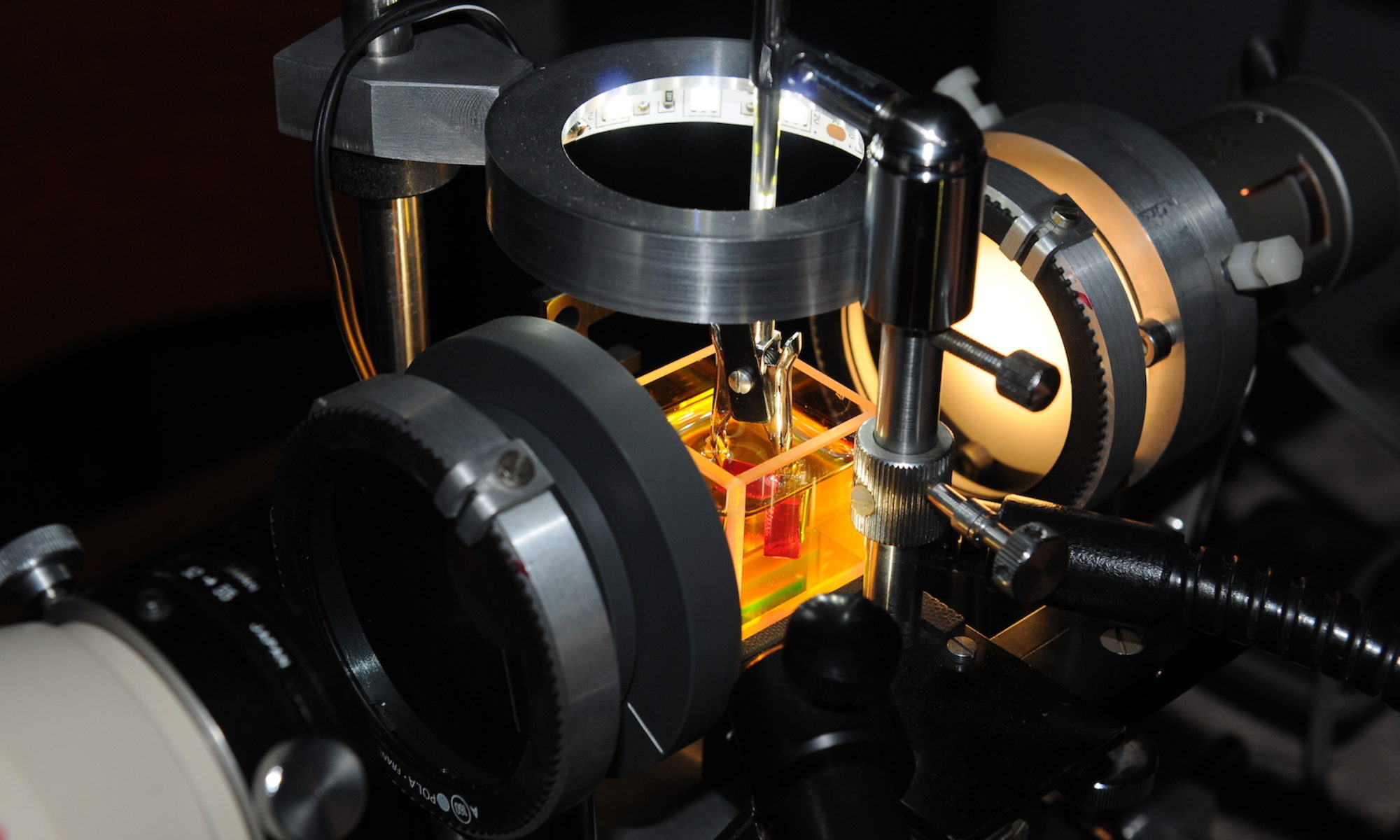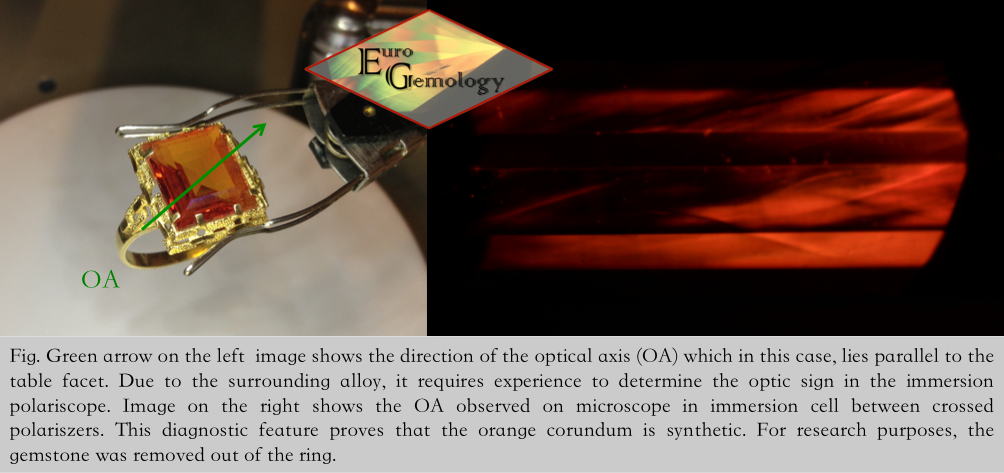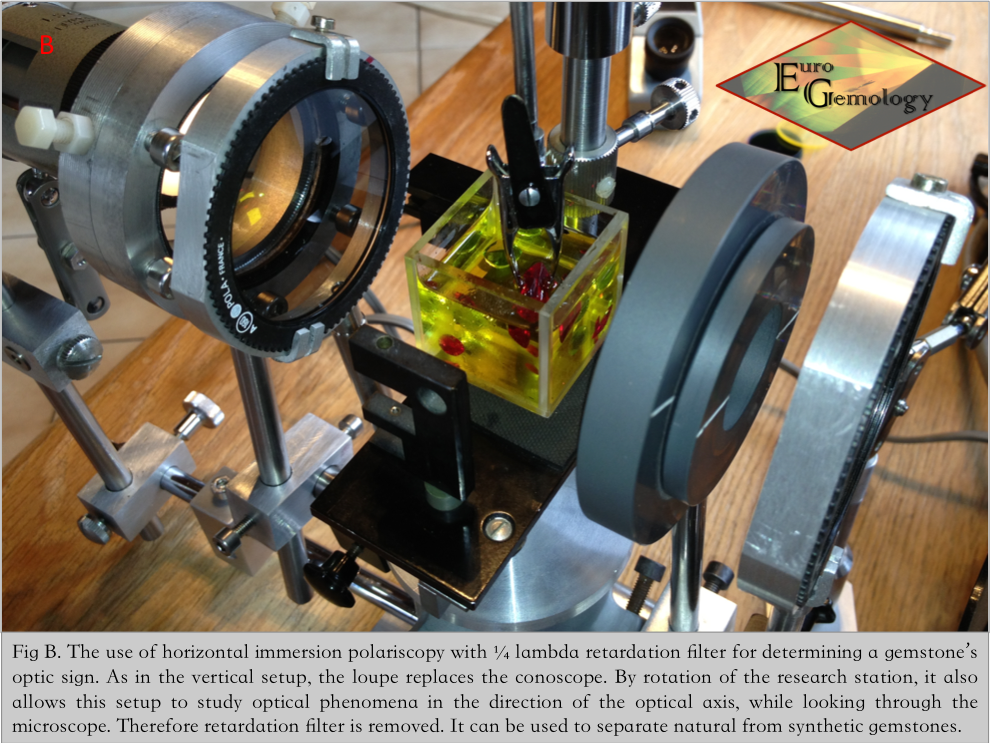 Importance of Immersion Polariscope
Importance of Immersion Polariscope
Polariscope and refractometer can be compared to yin and yang… they go hand in hand. As the obtained information from a polariscopic test on a gemstone belongs to the key diagnostic features, it’s important to understand its full potential. Usually a conventional commercial vertical polariscope without the immersion cell has its limitations. In some cases the interference figure can’t be found due to internal reflections of the facets, too many inclusions, the gemstone being too small, or facets not being polished enough etc…. An immersion liquid with a reasonable close corresponding RI to the gemstone allows you to work around these difficulties. This eases the observation of the interference figures, as they would be “floating” in your immersion cell, while hardly noticing the gemstone at all. In a certain way it could be compared to observing a rainbow in the sky. An initial RI reading of the gemstone should be taken in order to choose the right immersion liquid. (Beware that some of these immersion liquids are toxic and can be hazardous to health, therefore prior to using them, consult for medical advise and use them at own risk). The immersion setup not only allows observing the interference figures but also enables a gemologist to visually determine the optic sign of uniaxial gemstones by using a ¼ wave retardation plate in an easy way. As shown on picture A and B, there are two manners of using the immersion polariscope – either in a vertical or horizontal setup. For some practical reasons, the horizontal immersion polariscope has its benefits. In both methods the loupe/hand lens has replaced the use of the conoscope.
The immersion polariscope will be most relevant in gemstones where the refractive index measures higher than 1.81, as a classic or conventional gemological refractometer doesn’t allow readings above 1.81. When researching mounted gemstones, the use of immersion liquids becomes of an indispensible value, although bearing in mind that the optical axis can’t always be found due to the alloy surrounding a gemstone.
When the table facet of a MOUNTED gemstone lies parallel to its optical axis, generally speaking it will be hard to impossible to visually observe the optic sign of uniaxial gemstones in the immersion polariscope. The same applies for bend growth lines or Plato Sandmeier lines on microscope in synthetic corundum, which are important diagnostic features. Specific refractive index readings can indicate that the table facet lies parallel to optical axis.
Horizontal Immersion Polariscope with ¼ Wave Retardation Plate
As the polariscope can give absolution on the optic sign of uniaxial gemstones, it’s advisable to observe the gemstone first in an immersion polariscope with ¼ wave retardation plate. Finding the optical axis can be difficult in some cases (e.g. apatite, small or dark gemstones etc…). In many cases, it is required to observe the gemstone later again on microscope. Due to replacing the gemstone from the polariscope into the immersion cell of the microscope, you will most likely loose the direction of the optical axis and requires you to start all over again. Observing the optical axis on microscope would be necessary to study growth phenomena in order to separate natural from synthetic gemstones. I found this a very impractical way of working – first, it is time consuming, secondly, it causes to waste immersion liquid, which can be expensive in some cases. For this reason I decided to develop a horizontal setup. This allows you to perform immersion polariscopy and by just turning the gemological research station a quarter-turn, you can observe the gemstone in the direction of its optical axis without having to manipulate the gemstone. Working with a horizontal setup initially requires some more practice, but once the skill is mastered it shows its benefits.


